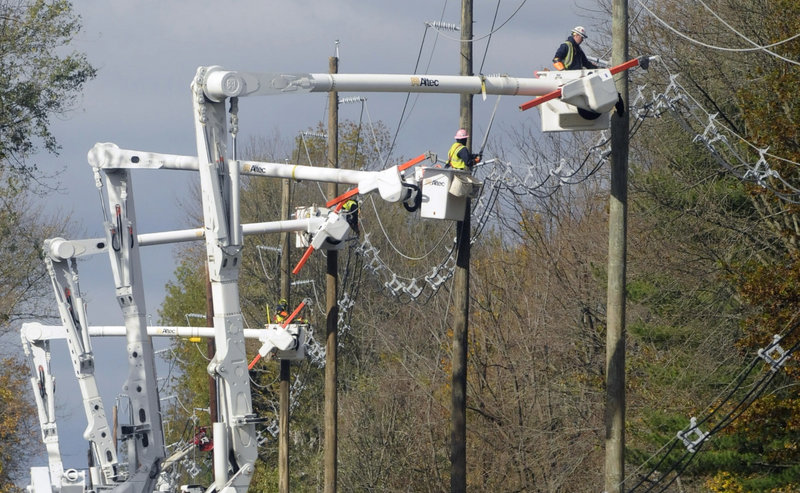WASHINGTON — A terrorist attack on the U.S. power grid could be more destructive than superstorm Sandy, possibly costing hundreds of billions of dollars and leading to thousands of deaths, the National Academy of Sciences says.
While such an event probably wouldn’t kill people immediately, it could cause widespread blackouts for weeks or months, according to a recently declassified report released Wednesday by the Academy. If it occurred during extreme weather, heat stress or exposure to cold may lead to “hundreds or even thousands of deaths,” the authors of the study wrote.
“An event of this magnitude and duration could lead to turmoil, widespread public fear, and an image of helplessness that would play directly into the hands of the terrorists,” they said.
While other entities have issued reports on electric-grid vulnerabilities, the study released today provides an unusually stark picture of what may happen if hackers, extremist groups, disgruntled employees or even energy companies themselves sabotage the nation’s power network.
It calls for the government to create a national inventory of portable generation equipment that can be used during such an event.
An attack “could be carried out by knowledgeable attackers with little risk of detection or interdiction,” it said.
The study released by the National Academy of Sciences was sponsored by the Department of Homeland Security and completed by the National Research Council, which is part of the National Academy of Sciences. Although the report was completed in 2007, President George W. Bush’s administration a year later prevented it from being distributed publicly.
The panel of experts who prepared the report, believing it contained no classified information, pressed for its dissemination, and in August the administration of President Barack Obama agreed to declassify most of the report.
National Academy of Sciences President Ralph J. Cicerone, and Charles M. Vest, president of the National Academy of Engineering, in a foreword to the report, said its key findings remain “highly relevant.”
The U.S. electricity network consists of a complicated web of generators, high-voltage power lines, lower voltage lines that run to homes and businesses, substations and other gear to keep electricity flowing smoothly across the country. The National Academy of Engineering called the transmission and distribution system, or the grid, “the world’s largest integrated machine.”
Threats to the network include physical and cyber attacks on equipment that is often decades-old and lacks the technology to limit the effects of such an event, the study said.
While a hurricane or ice storm usually only takes down distribution lines that utility crews can put back up, terrorists can disable transformers, which may take years to replace, said Alan Crane, a senior scientist who worked on the report.
“It’s the multiple attacks that have the really scary consequences,” Crane said.
Although the probability of such a conspiracy is low, the consequences “could just be really awful.”
The report raises questions about how a blackout would affect services including medical care, the water supply and the pumping of natural gas, which uses compressors powered by electricity, he said.
An attack could inflict more damage than superstorm Sandy, which roared across the Eastern U.S. at the end of October, according to a statement released with the study.
The storm temporarily tripped power to three nuclear reactors and caused a fourth, owned by Exelon Corp., to declare an alert. Tens of thousands of people are still without power.
“High-voltage transformers are of particular concern because they are vulnerable to attack, both from within and from outside the substation where they are located,” according to the report.
Transformers are often custom-built, difficult to transport because of their size, and made outside the U.S., meaning that the industry’s inventory could be “overwhelmed by a large attack,” it said.
Send questions/comments to the editors.



Success. Please wait for the page to reload. If the page does not reload within 5 seconds, please refresh the page.
Enter your email and password to access comments.
Hi, to comment on stories you must . This profile is in addition to your subscription and website login.
Already have a commenting profile? .
Invalid username/password.
Please check your email to confirm and complete your registration.
Only subscribers are eligible to post comments. Please subscribe or login first for digital access. Here’s why.
Use the form below to reset your password. When you've submitted your account email, we will send an email with a reset code.